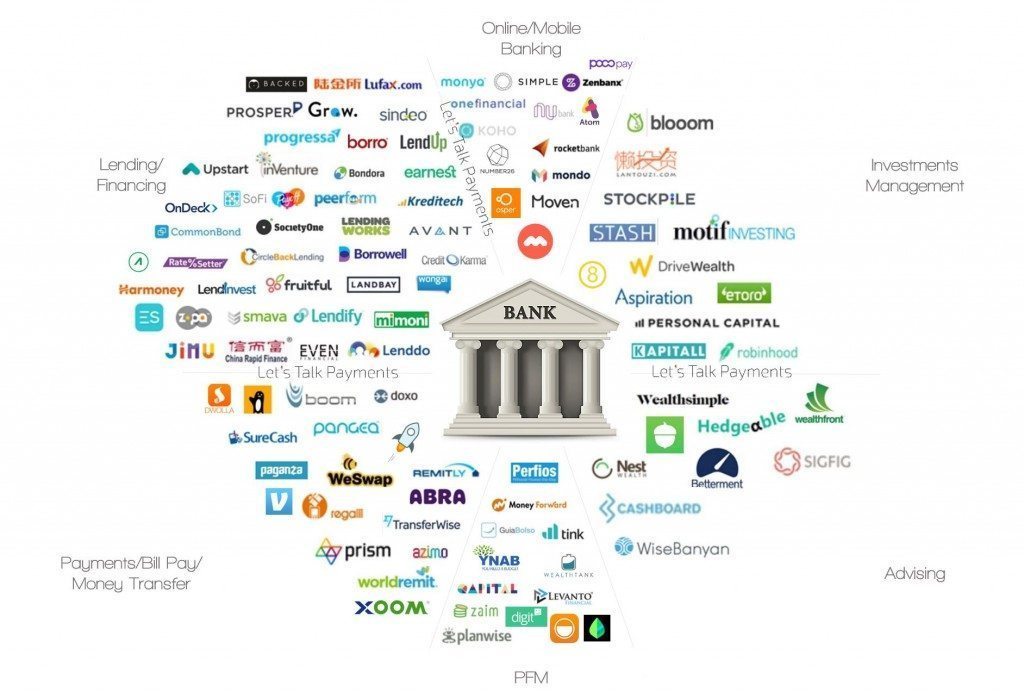
I just had an interesting discussion with a banking colleague who has been investing in start-ups. He said that many of the firms begin with a belief that they will succeed because they are not a bank.
A business strategy based upon attracting consumers by not being a bank, is not sustainable.
Once they find out that this is the case, they start building in more and more bank style functionality.
A business strategy based upon attracting consumers by looking like a bank, is not sustainable.
So then they start to see if they can create services that add to banking.
A business strategy based upon attracting consumers by making banks more complex, is not sustainable.
In other words, there are 100s of start-ups out there who begin with big ideas only to have their wings clipped and scaled back to something very different to what they started out to be.
This is well articulated by Izabella Kaminska over at FT Alphaville.
The Lifecycle of a Fintech startup:
Phase 1
Fintech startup creates a tool using engineering logic borrowed from information technology methodologies, tries to go it alone.
Phase 2
Fintech startup realises client acquisition is really hard and costly. Oh, and the tool either doesn’t scale or there’s some other unintended consequence related to risk or liquidity.
Phase 3
Fintech startup tries to sell the tool to banks, who engage out of politeness to avoid the risk of passing off on the next big thing.
Phase 4
Banks say… actually there’s a social or compliance reason we do things this way not that way…
Phase 5
Fintech start-up pivots to account for this… tries to resell tech to banks.
Phase 6
Banks say, actually you’ve also overlooked this other factor…
Phase 7
Fintech start-up adapts, and goes into “partnership” with the bank, at which point it realises the compliance headache associated with financial services, and also why the compliance is there in the first place.
Phase 8
Fintech is absorbed into the bureaucracy of banking. Innovation stalls.
Lifecycle completes.
There is a similar conversation over at the FCA (Financial Conduct Authority) when they have applications for banking licenses. There are almost 30 new banks starting up in the UK and they fall into either a digital bank camp (Atom, Civilised, Lintel, Mondo, Secco, Starling, Tandem) or a challenger bank camp (Aldermore, Handelsbanken, Metro, OneSavings, Shawbrook, Triodos, TSB, William & Glyn).
These neobanks we can take more seriously than some of the Fintech start-ups, because many are run by ex-bankers who have been around the block. Even so, the FCA say that many of these neobanks turn up with the idea that they will succeed because they are not a bank, they are more tech savvy, they understand millennials, they are nice and cuddly, they have a sexy funny logo, etc and so on.
So what it the point we are making here?
The point we are making is that anything that looks like a bank, walks like a bank, smells like a bank … is a bank and, as a bank, will have to adhere to the swathe of regulatory overhead that banks have to deal with. Once the fintech start-ups and neobanks realise this, they also realise it’s not worth it. For example, to become a UK bank you need at least £20 million of funding just to get through the gate with a license. Then you need a lot more to succeed. That’s why Atom Bank needed to get funding from BBVA ( a 30 percent stake for £45 million) and why Metro Bank is launching an IPO valued at £500 million after six years of operation, even though it is a £1.9 billion loss making institution.
Creating a bank is expensive and creating a differentiated bank is hard. Does that mean there’s no way to change banking? No. But the game changers tend to be other banks, like Santander and Banco Sabadell who are succeeding by eating up smaller banks like Abbey National, Alliance & Leicester, and Bradford & Bingley in Santander’s case; and TSB in Banco Sabadell’s.
So where is the disruption here? Where are the new models of finance.
Well, there are some. P2P lending, blockchain shared ledgers, mobile financial inclusion, roboadvisors. But many of these are serving under-served or over-looked markets, like students and the financial excluded. Where they target core banking products, questions arise. Even in P2P lending for example, the misguided but intriguing comments of the former head of UK financial regulation makes for interesting reading. Adair Turner, former head of the Financial Services Authority, was on the BBC last week warning that in the next five to 10 years its losses could “make the worst bankers look like lending geniuses”.
I say it’s misguided commentary because, knowing Zopa intimately, some of the P2P start-ups operate amazingly insightful risk models and banks could learn something from them. On the other hand, I do think a few of the P2P lenders could pull their socks up.
So the world is interesting and changing and developing. Banks and incumbents have the upper hand because they understand the regulatory minefields of compliance and audit required, have millions of customers, are tech savvy and adaptable to change. There are chinks in the bank’s armour that some startups are exploiting but, over time, it is far more likely that such holes will be filled through partnering than disrupting.
Chris M Skinner
Chris Skinner is best known as an independent commentator on the financial markets through his blog, TheFinanser.com, as author of the bestselling book Digital Bank, and Chair of the European networking forum the Financial Services Club. He has been voted one of the most influential people in banking by The Financial Brand (as well as one of the best blogs), a FinTech Titan (Next Bank), one of the Fintech Leaders you need to follow (City AM, Deluxe and Jax Finance), as well as one of the Top 40 most influential people in financial technology by the Wall Street Journal's Financial News. To learn more click here...


